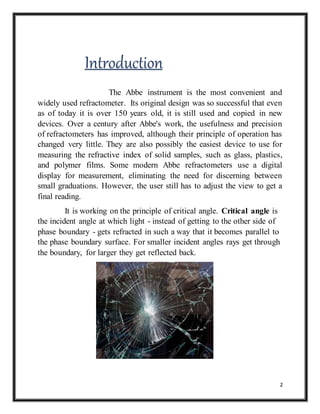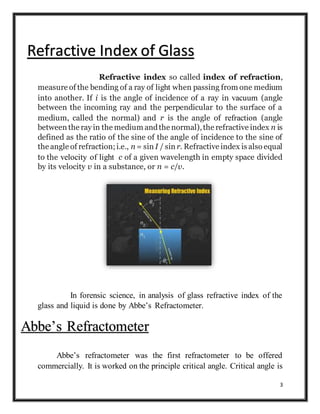1. The Abbe refractometer is over 150 years old but is still widely used today to measure the refractive index of solids and liquids. It works by measuring the angle at which light passes through a sample and is refracted at the critical angle.
2. Refractive index is a ratio of how much a light ray bends when passing from one medium to another. It is important in forensic science for analyzing glass evidence. The Abbe refractometer precisely measures refractive index to compare glass samples.
3. A case example is described where glass fragments found on a victim were matched to a hit-and-run vehicle using refractive index testing, helping convict the driver. Analysis of refractive index plays a key role







